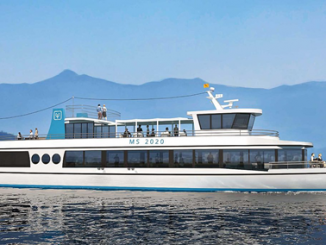
High-temperature superconductor degaussing systems from American Superconductor (AMSC) are increasingly finding their way aboard a new class of U.S. Navy ships, designed to cloak their magnetic signatures from enemy vessels and underwater mines.
In December, AMSC finalized its fifth contract for what has become the baseline design for the San Antonio-class ship platform. The delivery contract is with Huntington Ingalls Industries through its Ingalls Shipbuilding division for a high temperature superconductor (HTS)-based ship protection system to be deployed on the amphibious transport dock ship, LPD-32.
Degaussing systems typically containing tons of copper wire are utilized in most naval ships to cloak their magnetic signature, making them much more difficult to be detected by magnetic sensors and magnetically activated mines. AMSC’s innovative degaussing system consists of smaller, lighter, and higher performing high-temperature superconductor (HTS) cable, eliminating 50% to 80% of the system weight with significant power savings. The degaussing system is essentially a network of cables coursing through the ship, with the electrical current in the cables calibrated to counteract the magnetic field fluctuations as it travels through the water. Until now, the Navy has relied on heavy copper-cable degaussing systems.
Other contracts for the San Antonio Class include the USS Fort Lauderdale, USS Richard McCool, USS Harrisburg, and USS Pittsburgh. Under the terms of the new contract, AMSC has agreed to deliver the degaussing system to Ingalls’ shipbuilding facility in Pascagoula, Mississippi for integration into LPD-32, which represents the third vessel of the next generation amphibious warship ‘Flight II’ variant of the San Antonio-class.
The San Antonio-class of ships can carry up to 800 troops and has the capability of transporting and debarking landing craft air cushion or conventional landing crafts, augmented by helicopters or vertical take-off and landing aircraft such as the MV-22. The ships are expected to support amphibious assault, special operations or expeditionary warfare missions through the first half of the 21st century.

In January 2022, AMSC made delivery on the first system, inserted aboard the USS Fort Lauderdale. “The delivery of this system is a watershed moment for our company and for superconductor technology. We have a culture of delivery and believe that the delivery of this system demonstrates momentum for our company and for the naval industry to adopt change,” said Daniel McGahn, CEO. “We look forward to continuing to work with the U.S. Navy to deliver and install our HTS degaussing system on future San Antonio class ships as well as other potential vessels.”
AMSC and the Navy have collaborated on AMSC’s advanced HTS-based Ship Protection Systems. Their core components are common and transferable to other applications being targeted for ship implementation. AMSC is continuing its work to expand HTS technology into the fleet through a variety of applications for power, propulsion and protection equipment.
Headquartered near Boston, AMSC also applies its HTS technology to marine motors and generators that are compact, efficient and power-dense propulsion systems, also to wind turbines. For more info, see www.amsc.com.



